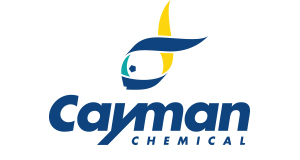Asialoglycoprotein Receptor 1 Extracellular Domain (human, r
Asialoglycoprotein Receptor 1 Extracellular Domain (human, r
SKU
CAY38064-1
Packaging Unit
1 mg
Manufacturer
Cayman Chemical
Availability:
loading...
Price is loading...
Shelf life (days): 365.0
Formulation: Lyophilized from sterile PBS, pH 7.4
Uniprot ID: P07306
Purity: ≥90% estimated by SDS-PAGE
Formula Weight: 0.0
Notes: Asialoglycoprotein receptor 1 is a calcium-dependent C-type lectin receptor.{65591} It is composed of a carbohydrate recognition domain, which primarily recognizes galactosides such as D-galactose and N-acetyl-D-galactosamine (GalNAc), stalk region, transmembrane domain, and cytoplasmic domain. Asialoglycoprotein receptor 1 is expressed in hepatocytes and alternative splicing produces both long and short isoforms.{65592} The long isoform localizes to the cell membrane, while the short isoform exists as a soluble form that is both secreted and found in the cytoplasm. The asialoglycoprotein receptor is a trimer that is commonly formed by two H1 subunits and one H2 subunit.{65591} It is involved in the clearance of desialylated serum glycoproteins and hepatotropic virus entry via endocytosis. Ectopic expression of the gene encoding asialoglycoprotein receptor 1 (ASGR1) increases binding of hepatitis E virus to cells in vitro.{65593} Knockdown of ASGR1 increases survival and decreases liver injury and plasma TNF-α and IL-1β levels in a mouse model of sepsis.{65594} Decreased protein levels of asialoglycoprotein receptor 1 negatively correlate with hepatocellular carcinoma tumor grade.{65595} The asialoglycoprotein receptor has been used as a target of galactosylated drug conjugates and various lipid-based drug delivery (LBDD) platforms, including lipid nanoparticles (LNPs), liposomes, and micelles, for therapeutic and imaging applications.{65591} Cayman's Asialoglycoprotein Receptor 1 Extracellular Domain (human, recombinant) protein consists of 246 amino acids and a calculated molecular weight of 28.8 kDa. By SDS-PAGE, under reducing conditions, the apparent molecular mass of the protein is approximately 37 kDa due to glycosylation.
Formulation: Lyophilized from sterile PBS, pH 7.4
Uniprot ID: P07306
Purity: ≥90% estimated by SDS-PAGE
Formula Weight: 0.0
Notes: Asialoglycoprotein receptor 1 is a calcium-dependent C-type lectin receptor.{65591} It is composed of a carbohydrate recognition domain, which primarily recognizes galactosides such as D-galactose and N-acetyl-D-galactosamine (GalNAc), stalk region, transmembrane domain, and cytoplasmic domain. Asialoglycoprotein receptor 1 is expressed in hepatocytes and alternative splicing produces both long and short isoforms.{65592} The long isoform localizes to the cell membrane, while the short isoform exists as a soluble form that is both secreted and found in the cytoplasm. The asialoglycoprotein receptor is a trimer that is commonly formed by two H1 subunits and one H2 subunit.{65591} It is involved in the clearance of desialylated serum glycoproteins and hepatotropic virus entry via endocytosis. Ectopic expression of the gene encoding asialoglycoprotein receptor 1 (ASGR1) increases binding of hepatitis E virus to cells in vitro.{65593} Knockdown of ASGR1 increases survival and decreases liver injury and plasma TNF-α and IL-1β levels in a mouse model of sepsis.{65594} Decreased protein levels of asialoglycoprotein receptor 1 negatively correlate with hepatocellular carcinoma tumor grade.{65595} The asialoglycoprotein receptor has been used as a target of galactosylated drug conjugates and various lipid-based drug delivery (LBDD) platforms, including lipid nanoparticles (LNPs), liposomes, and micelles, for therapeutic and imaging applications.{65591} Cayman's Asialoglycoprotein Receptor 1 Extracellular Domain (human, recombinant) protein consists of 246 amino acids and a calculated molecular weight of 28.8 kDa. By SDS-PAGE, under reducing conditions, the apparent molecular mass of the protein is approximately 37 kDa due to glycosylation.
| SKU | CAY38064-1 |
|---|---|
| Manufacturer | Cayman Chemical |
| Manufacturer SKU | 38064-1 |
| Package Unit | 1 mg |
| Quantity Unit | STK |
| Clonality | Recombinant |
| Product information (PDF) | Download |
| MSDS (PDF) |
|

 Deutsch
Deutsch










